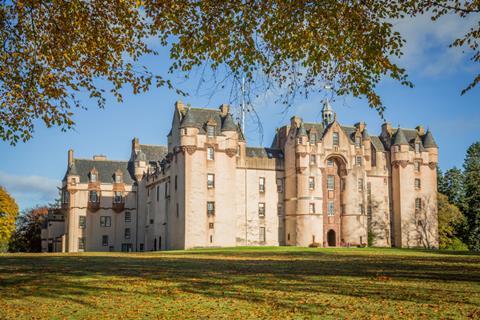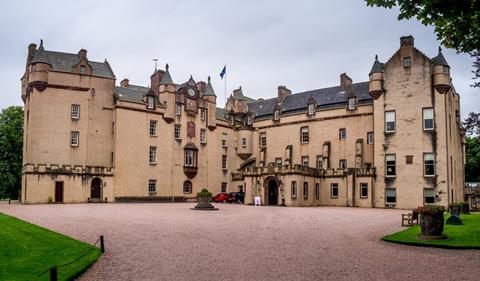National Trust for Scotland to appoint practice on major conservation project at category A-listed Fyvie Castle

The National Trust for Scotland (NTS) is looking for an architect to lead the restoration of an 800-year-old castle which contains a sealed room said to “curse” anyone who enters.
The conservation charity said it has been developing a major project at Fyvie Castle, near Turriff in Aberdeenshire, to ensure the conservation and future interpretation of the site and its wider estate.
It is now looking for a team of external experts to carry out some “hugely important but challenging work” which will include restoring areas of wear and tear and considering how to deal with some “interesting previous interventions”.
Practices have until 1pm on 1 May to send in tenders for the job, for which the timescales and budgets have yet to be decided and will be informed by the response to the project brief.
The NTS described the category A-listed castle, the earliest parts of which date to the 13th century, as an “incredibly significant site with over 800 years of heritage linked to the story and identity of Scotland.”
But it has also become notorious for reports of paranormal phenomena, including a sealed room which will supposedly kill any man who enters and cause his wife to be blinded.

The room, described by the NTS as a “dungeon”, is one of several legends told about the building, which has been featured on television shows including a BBC documentary on Scottish ghost stories and long-running series Most Haunted.
Other tales include a curse on firstborn sons of families which live in the castle, two ghosts, three “weeping stones”, a mysterious blood stain and a skeleton said to have been found sealed in a hidden space behind a bedroom wall.
Aside from the site’s substantial amount of folklore, the building has also had a long history as an important royal stronghold in the 14th century wars between England and Scotland and as the childhood home of executed 17th century king Charles I.
It was later owned by a succession of families who each added their own towers to the building, with the most recent completed in the late 19th century.

















No comments yet